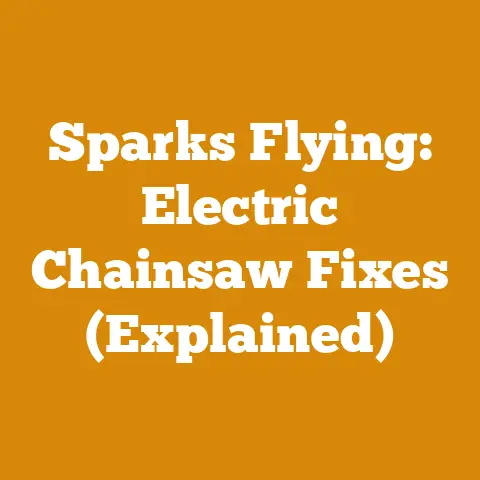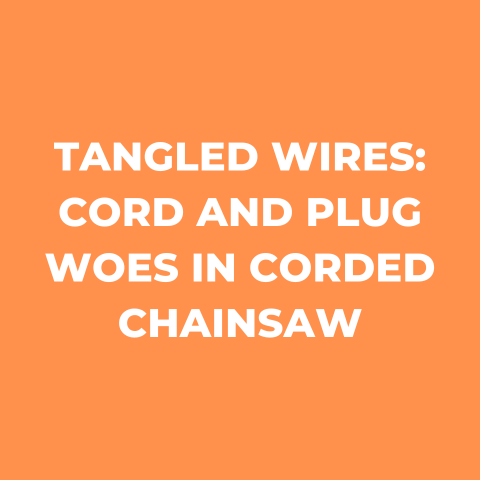Boosting Performance: Chainsaw Mods (Explained)
For chainsaw owners looking to boost the performance of their equipment, modifying and upgrading components can make a significant difference.
Whether you use your chainsaw for commercial logging, tree care, milling, or home use, a well-tuned saw that runs efficiently is vital for safety, productivity, and reliability.
This detailed guide will explore common chainsaw performance mods, from air filters and mufflers to bars and chains.
Follow the step-by-step instructions to properly implement upgrades that match your saw’s displacement and intended application.
With a few strategic modifications, you can unlock the full potential of your chainsaw.
Air Filter Mods
A clean air filter is one of the simplest ways to directly impact engine performance.
As filters accumulate debris, airflow becomes restricted, resulting in power loss.
Upgrading to a performance filter can increase air volume to the carburetor and cylinder.
Stock Paper Filters
Most stock chainsaw filters are flat paper elements or pleated paper inserts.
These disposable filters trap large particles but allow small dust and dirt through over time.
Check and replace paper filters frequently.
Tap filters gently or blow out debris with compressed air.
Avoid washing, as paper elements are prone to tearing when wet.
Performance Foam Filters
For consistently dusty conditions or professional use, consider replacing the stock paper element with a reusable foam filter.
Look for oil-impregnated foam elements, which have superior filtration and increase airflow.
Brands like Husqvarna, Oregon, and Stihl offer direct replacement foam filters for most models.
To clean foam filters, wash gently in warm soapy water.
Rinse thoroughly until all soap residue is gone.
Squeeze out excess moisture but do not wring or twist.
Allow to air dry completely.
Re-oil using manufacturer recommended filter oil.
Apply lightly and evenly across the entire surface of the filter.
High-Flow Performance Filters
Extreme performance can be achieved by upgrading to a free-flowing performance air filter kit.
These units have specially designed intake tracts and multi-stage filtration media to allow maximum airflow while trapping fine particles.
Popular options are available from aftermarket brands like K&N.
When installing high-flow filters, also check the carburetor jetting.
More air may require adjustments for proper air/fuel ratios.
Follow the filter manufacturer’s instructions to ensure proper fit and orientation.
Avoid over-oiling to prevent filter saturation.
Inspect frequently and clean or replace as needed for peak performance.
Muffler & Exhaust Mods
Modifying the muffler and exhaust system is a common way to boost chainsaw horsepower.
But exercise caution – excessive modifications outside of manufacturer guidelines may increase vibration and emissions.
Consult an experienced chainsaw mechanic before tackling major exhaust work.
Muffler Baffles
Many stock mufflers contain internal baffles that muffle sound but also inhibit exhaust flow.
Drilling or removing the baffle can allow freer exhaust outflow, increasing engine efficiency.
Use a drill bit slightly larger than the existing outlet hole for minor enlargement.
For full baffle removal, disassemble the muffler and extract the baffle plate or tube.
Ensure proper exhaust reinstallation and check for leaks before use.
A baffle-free muffler will be significantly louder.
Always wear hearing protection.
Check local noise regulations.
Exhaust Ports
Enlarging the exhaust port enables faster exhaust scavenging for a boost in power.
This should only be done by an experienced mechanic.
The cylinder must be disassembled, and the port precisely enlarged using specialty tools like cylinder burrs and die grinders.
Match the port to a replacement pipe or muffler design.
Improper porting risks piston and cylinder damage due to overheating.
Fuel & Air Mods
Properly tuning fuel and air systems is vital for peak performance.
Always use fresh, ethanol-free fuel and quality bar and chain oil.
Consider these additional fueling upgrades:
- Larger main jet – Increases fuel volume for more power at full throttle.
- Adjustable carburetor – Permits fine tuning of air/fuel ratios.
- Dual-port muffler – Separates exhaust flow to improve scavenging.
- Reed valve intake – Controls intake airflow for optimized efficiency.
- Pressurized fuel tank – Forced injection of fuel, improves consistency in demanding conditions.
Have modifications tuned by an authorized technician.
Monitor the saw for correct idling, acceleration, maximum RPMs and temperatures after modifications.
Sprocket & Chain Upgrades
The cutting chain does the actual work of the chainsaw.
Enhancing this vital component can directly increase cutting speed and performance.
Chain Types
Stock chains are adequate for most users.
But specialized chain types exist for specific tasks:
- Chisel chain – Aggressive cutting for boring and felling.
- Semi-chisel – Balance of speed and smoothness for general use.
- Skip chain – Fast limbing and bucking with reduced kickback.
Match the chain type to the intended application.
Chisel chains cut fastest but cause more vibration and wear.
Skip designs excel at limbing but lack power for big cuts.
Semi-chisel offers a versatile middle ground.
Consult your saw manual for optimal chain selections.
Sprocket Size
Larger drive sprockets have more teeth to engage the chain.
Adding 2-4 extra teeth enhances chain speed proportionally.
Use manufacturer sprocket charts to identify the next size up sprocket for your model.
Ensure the new sprocket aligns properly on the saw and engages fully into the clutch drum.
The chain must also be lengthened when upsizing the sprocket’s diameter.
Subtract the new sprocket’s number of teeth from the old one.
Then multiply this difference by your chain’s pitch measurement.
This gives the number of drive links to add.
Use a chain breaker tool to press out the existing rivets as needed to insert new sections of chain.
Bar Length & Profile
Bars are available in different lengths, gauges, and nose profiles.
- Longer bars provide greater reach but lose some power in long cuts.
- Heavy duty gauge bars resist bending and reduce vibration in large wood.
- Replaceable sprocket-nose bars permit sprocket changes without replacing the bar.
- Hard-nose bars maximize burring and boring capability.
Match your bar selection to the typical tree sizes you handle.
Longer bars require more engine power to drive efficiently.
Upgrade to a heavier saw class if moving to a significantly longer bar for frequent big cuts.
Routine Maintenance
Even modified high-performance chainsaws need regular upkeep for longevity. Follow these best practices:
- Clean the exterior after each use.
Pay special attention to the air intake vents and filter area.
Use compressed air to blow out debris and a damp cloth to wipe down surfaces. - Inspect fuel lines, filters and the fuel cap before each use.
Ensure vent lines are clear and filters clean.
Replace damaged components immediately. - Check the bar and chain for lubrication, tension, sharpness and wear before starting work.
Oil, sharpen, and tension as needed. - Clear all accumulated sawdust and wood chips from the clutch cover, chain path, sprocket and bar rails using a brush and compressed air after each use.
- Change the spark plug annually or after 100 hours of use.
Check for correct gap and deposits indicating lean or rich conditions. - Have an authorized service shop change fluids and inspect components annually.
This includes air filter, fuel filter and lines, spark arrestor, clutch, sprocket and carburetor.
Following professional maintenance intervals will keep your chainsaw running in peak modified condition while preventing failures down the road.
Safety Considerations
When modifying a chainsaw:
- Carefully follow all manufacturer installation instructions.
Improper procedures can lead to saw damage or malfunction. - Tune and test the saw thoroughly before field use.
Ensure safe idle, acceleration, lubrication and maximum RPMs. - Wear full protective gear including chaps, hard hat, boots, gloves and eye/ear protection.
- Check local regulations regarding saw modifications and noise limits.
Certain performance upgrades may not be legal in your area. - Use extra caution when operating a modified saw.
Added power can increase forces and lead to more reactive kickback if used improperly. - Never modify safety features like chain brakes or throttle locks.
Attempting to upgrade performance by disabling vital safety systems is extremely dangerous.
Properly done, strategic chainsaw modifications can boost productivity and enhance operating experience.
But any physical alterations also come with risks if not implemented carefully.
Research modifications thoroughly, use reputable parts, and always make safety the top priority.
With common sense and professional support, your upgraded chainsaw will deliver reliable high performance for years to come.






